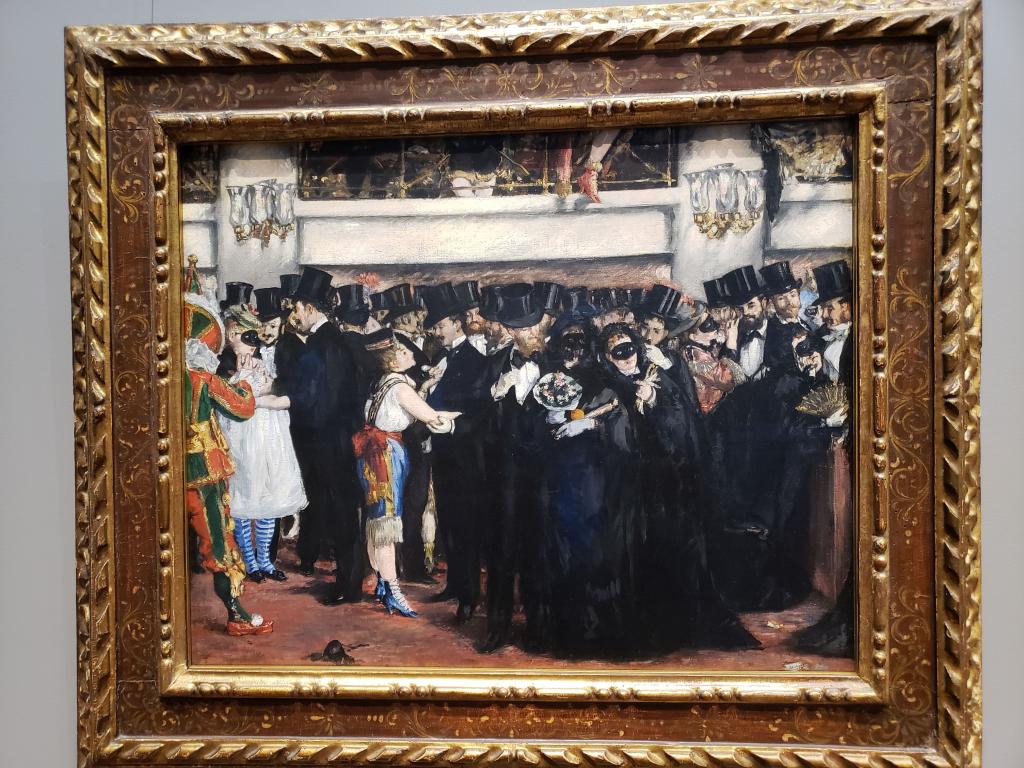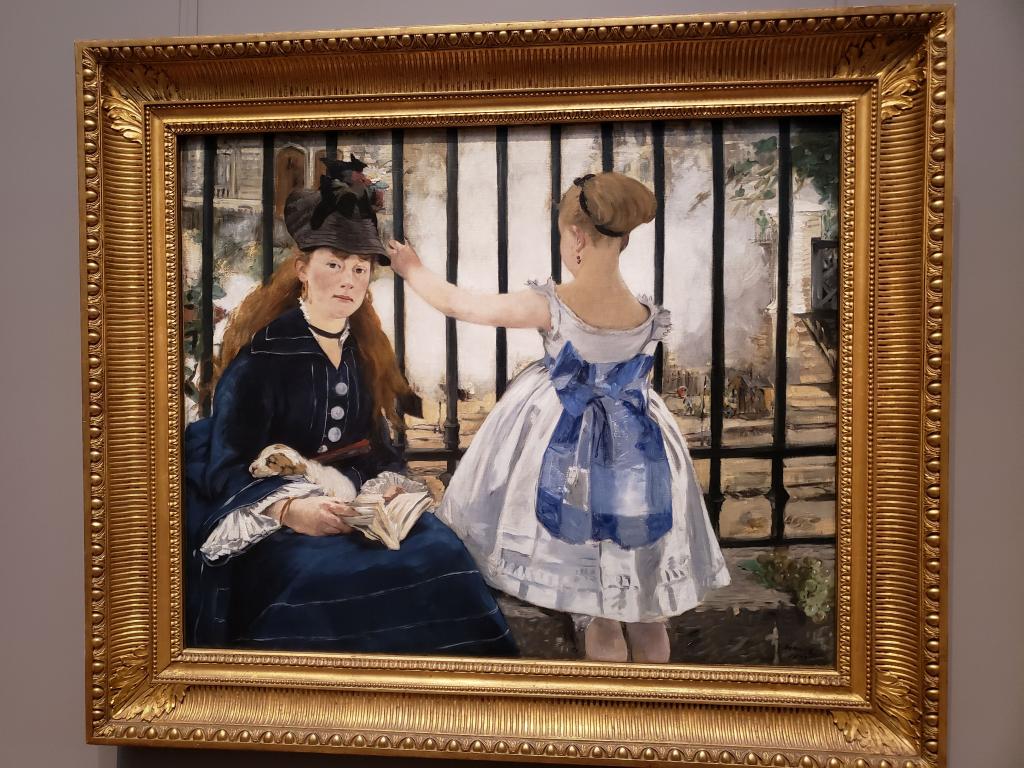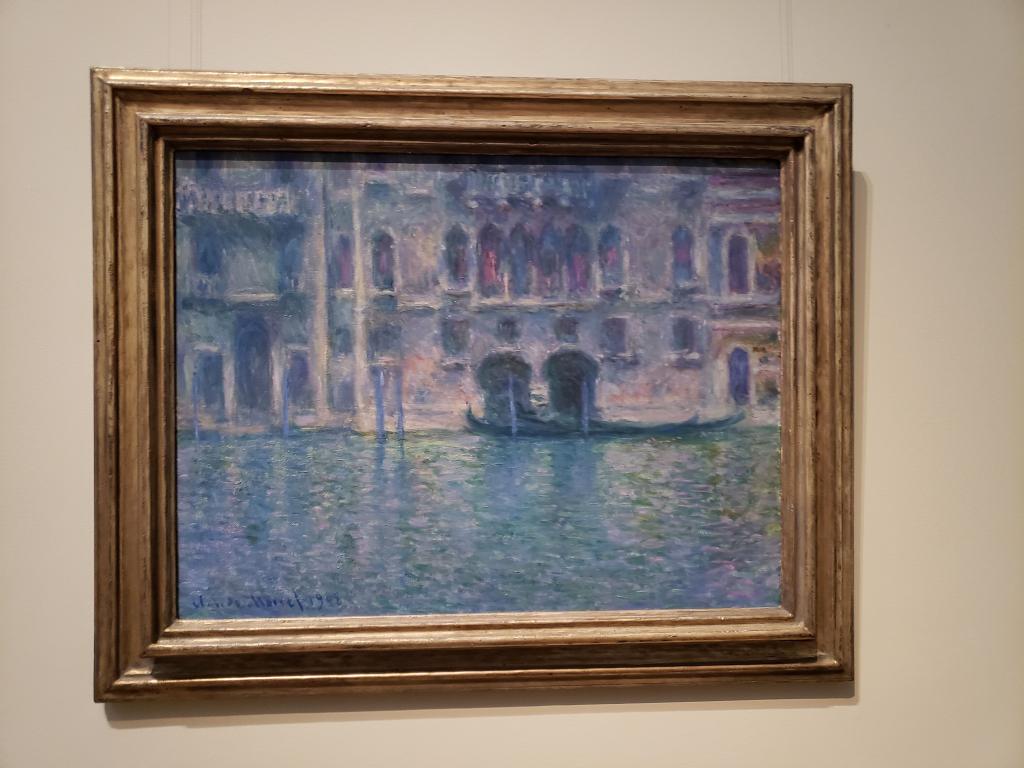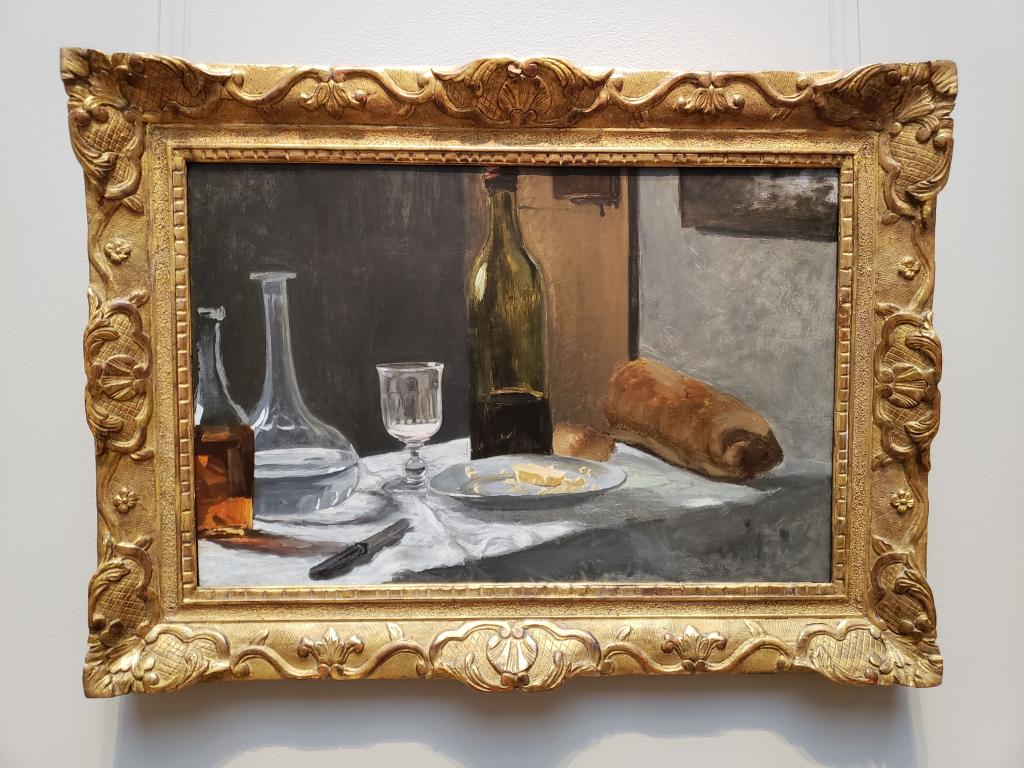Ann and I both love the Impressionists, and I will devote several posts to the Gallery’s fine collection. These painters almost never do religious paintings, and even when for example they paint a cathedral, what they are really interested in is the effect of changing light on the cathedral. Impressionism in general is all about the light and lighting. It is meant to create an ‘impression’ on the viewer of the color and light that they see reflected off all sorts of things. Yes, some of the early paintings by these folks are more ‘representational’ as we shall see, but that was not their focus or forte.
Here is a painting from 1873 by Manet— of a Masked Ball at the Opera
 Or consider this painting of a mother and child at the railway station done in the same year.
Or consider this painting of a mother and child at the railway station done in the same year.

Compare those paintings to Monet’s painting of the Palazzo in Venice done considerably later (1908) when Impressionism was finally an acceptable art form. 
The French were such art snobs, that until the Impressionists became the rage in east coast of the U.S. museums, the French had little but criticism for the whole lot of them.
The Impressionists did paintings on commission for people to hang in their homes, and so you find a lot of still lifes, like the one below by Monet, or ordinary scenes from rural and village life.
 This painting is from early on in Monet’s career, 1863, but already you can detect the impressionist style and technique.
This painting is from early on in Monet’s career, 1863, but already you can detect the impressionist style and technique.














